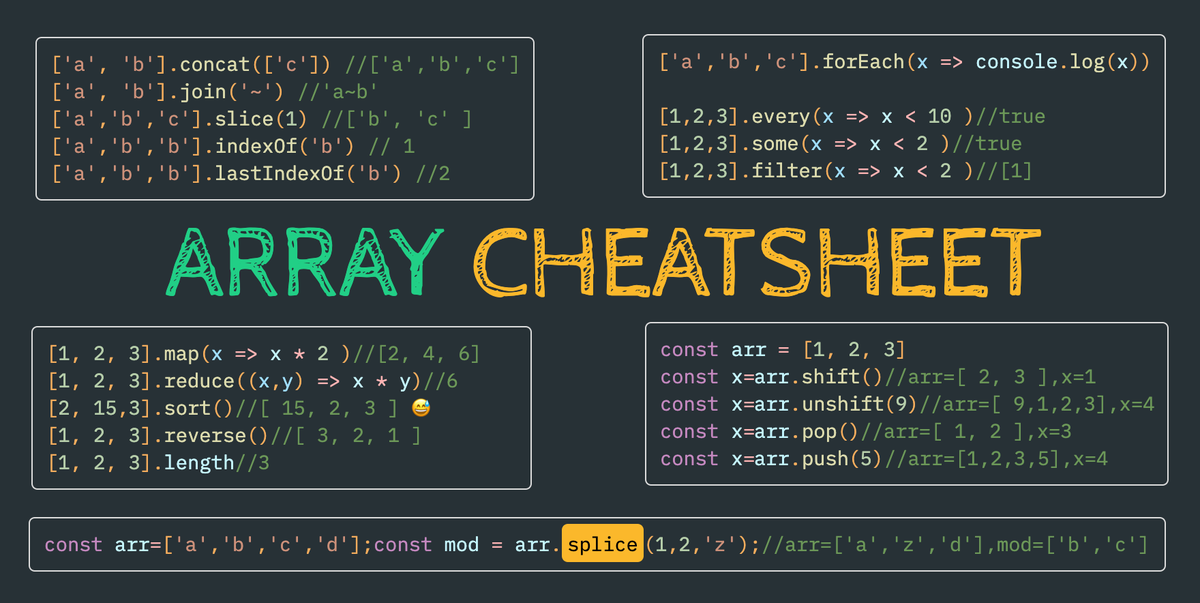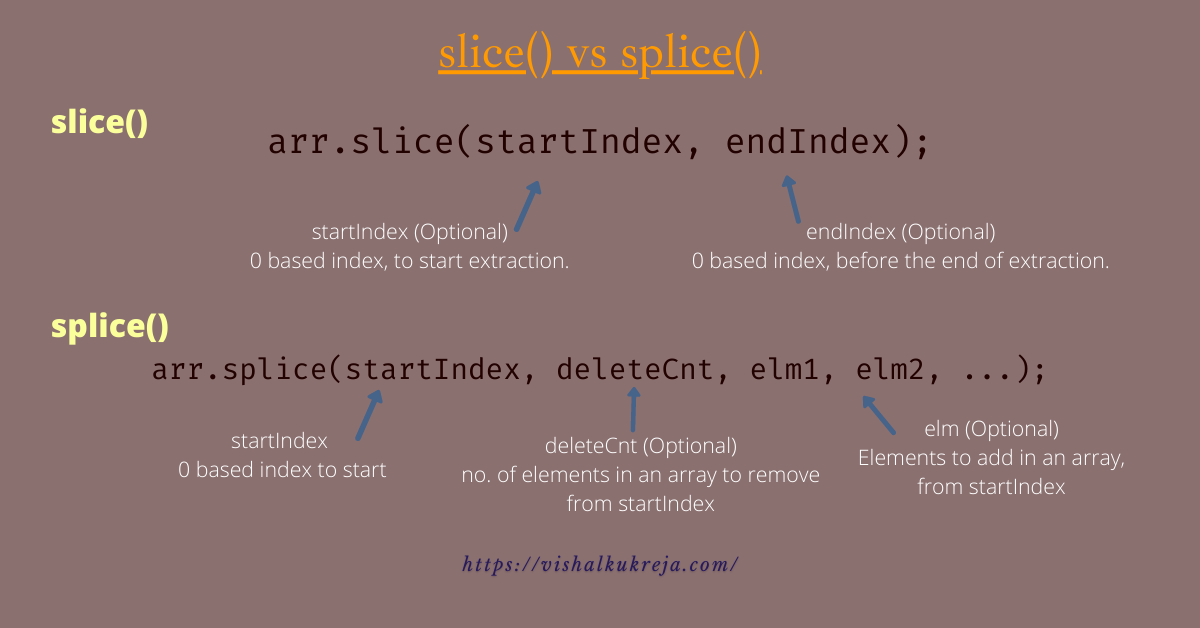

JavaScript arrays have a push() function that lets you add elements to the end of the array, and an unshift() function that lets you add elements to the beginning of the array.

The splice() function also lets you add elements to the middle of the array. On the other hand, `splice()` modifies the array in place.Īrr2 = arr // false Adding Elements to the Middle `arr` still has 'c', because `filter()` doesn't modify the array // in place. Remove 1 element starting at index 2 const arr2 = arr.filter( ( v, i) => i != 2) This means filter() is the better choice for applications that rely on immutability, like React apps. The key difference between these two approaches is that filter() creates a new array. You may see JavaScript projects use filter() instead of splice() to remove elements from an array. The deleteCount parameter tells splice() how many elements to delete.

The start parameter tells splice() where to start modifying the array. The first 2 parameters to splice() are called start and deleteCount. Here's how you would remove 'c' using splice(): const arr = The splice() function is the only native array function that lets you remove elements from the middle of the array without creating a new array. It is most commonly used to remove elements from an array, but it can also be used to add elements to the middle of an array.
Insert all the elements of arr1 into arr2 starting at the index in arr2 specified by n.The Array#splice() function lets you modify an array in-place by adding and removing elements. We want to insert each element of arr1 into arr2. We don’t want to insert the entire array arr1 into arr2. That’s exactly what we’re going to do with it in this challenge. The spread operator is most commonly used when you want to use the elements of an array as arguments to a function. ES6 gifted us with the spread operator which looks like ellipses - just three dots in a row. Just separate each element with a comma, like so item1, item2, item3, item4.splice(start, deleteCount, item1, item2, item3, etc.)Īnother concept to keep in mind for this algorithm scripting challenge is the spread operator. Wait a second! What if you don’t want to delete anything? What if you just want to insert elements? That’s fine. splice() at which index to begin deleting elements. splice() several arguments that determine where the deletion begins, how much is deleted, and what is inserted. splice() changes the contents of an array by removing or replacing existing elements and/or adding new elements. So we’re going to need to make a copy of one of them. This will be useful to us in this algorithm scripting challenge because the instructions tell us that we should not directly modify the input arrays. slice() on a string without passing it any additional information, it will return the whole string. slice() extracts a section of a string and returns it as a new string. That’s good news for us!ĭata Structure: We are going to have to transform our input string into an array in order to manipulate each word separately. The provided test cases also show that we aren’t being thrown any curve balls in terms of weird compound words separated by symbols instead of whitespace. Ultimately, we want to return the input string with the first letter - and only the first letter - of each word capitalized.Įxamples/Test Cases: Our provided test cases show that we should have a capitalized letter only at the beginning of each word. Understanding the Problem: We have one input, a string.







 0 kommentar(er)
0 kommentar(er)
